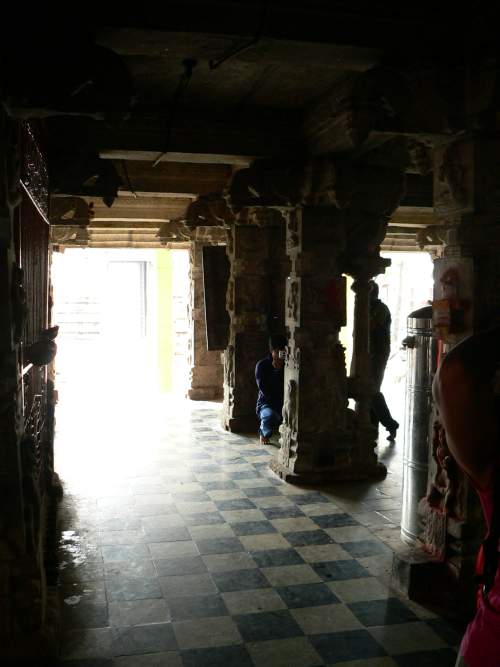Despite the downpour last Saturday night, you could see an eager and motley group waiting near/opposite Ulsoor Police station a little before 8 am last Sunday (July 11th) morning; for the Ulsoor Parichay (introduction). This was a part of the series of heritage walks organised by the Bangalore chapter of the Indian National Trust for Art and Cultural Heritage (INTACH) as part of its Parichay programme, an initiative aimed at raising awareness of Bangalore’s heritage among its citizens.
The parichay was planned so as to walk through some parts of Ulsoor where we could witness and discuss processes of urban change. We visited residential areas including Car Street, Bazaar Street and Temple Street that exemplified interesting elements of vernacular architecture and evidence of British town-planning. We also familiarised ourselves with the Someshwara temple – one of Bangalore’s oldest temples – and the recently excavated Kalyani, or temple tank.
Ulsoor as a hub
Dr Satya Prakash Varanashi, Conservation Architect and convenor of INTACH, Bangalore told us how he intended the walk to be led by all of us, rather than him alone. And it was nice to see this spirit carried throughout the walk – either by questions posed by the group or information shared by various participants.

Someshwara temple. Pic: Vinita
Meera Iyer, freelance journalist and a member of INTACH and Pankaj Modi, Conservation Architect, also shared their knowledge and experience to ensure the walk was packed with interesting facts and popular stories.
Starting within the premises of the famous Someshwara temple, we were told how Ulsoor is an interesting example of one of Bangalore’s older settlements and it was almost like the nucleus of the cantonment region in the British period. It is also one of the areas presently undergoing major transformation. It has always had a unique mix communities.
During the British period, Ulsoor served as a settlement for migrants mainly from Tamil Nadu. The Ulsoor tank also played a significant role and found mention in several official records during the British period. We were also told that issues related to sanitation were raised even during the British period as the sewage was found to be emptied in the tank and the same tank used to supply water to the cantonment region.
Someshwara temple
We were guided through the Ulsoor Someshwara temple and all of us appreciated the various distinctive forms of architecture. What was interesting was the fact that there is apparently no specific inscription that dates the temple so it is purely the architectural styles that give a sense of the period it was built and renovated in.

The pillar style of Someshwara temple is typical of the Vijayanagar empire architecture. Pic: Vinita
For instance, the pillar style of the temple is so typical of the Vijayanagar empire which dates the style between the 9th and 11th century. While some of other work is believed to be typical of the Chola period which dates from 9th to 13th century.
It is believed that Kempegowda, founder of Bangalore, rested under a tree after a hunt in the forest (the area surrounding the temple was the forest) and dreamt of Someshwara who told him to build a temple in his honour.
Ganda Berunda
Sourabh, another volunteer from INTACH pointed out the double-headed ganda berunda that is said to symbolise royalty. We were quizzed on where we see it everyday in Bangalore and someone said – on the policeman’s belt. Yet another person pulled out a BMTC bus ticket and we all saw it right there again. It is used as the official emblem of the Karnataka government. While the exact history is unknown, it is believed to be used by the Parsis and even in Russia on the rouble.

Double-headed ganda berunda found on the pillars of Someshwara temple. Pic: Vinita
Within the temple precincts there are believed to be two figures depicting Kempegowda – holding a staff and a blanket over his head. One within the inner temple area and the other outside.
Kempegowda is believed to have extended the temple by building seven prakaaras around the temple’s sanctum. As we were leaving the temple premises, we readily accepted some delicious prasad offered by a devotee!
Urban Planning, Development, Conservation
To know more and to make sure you are a part of the next parichay, keep yourself updated through INTACH’s page on Facebook.
The next part of the walk took us through the area surrounding the temple. We were told how Ulsoor was originally planned with the main streets running in accordance with the cardinal directions and the natural gradient of the area. All of this ensured that the water led towards the tank and the area did not have issues of flooding or water stagnation. Today, however, its a different story with the metro construction work having eaten the roads and several buildings around.
Modi said that things might have been a little different if the metro construction had been planned keeping in mind the old streetscape. The similarities between Ulsoor and Gavipuram (temple, tank and tower) also highlighted the importance given to planning during KempeGowda’s period.
Walking through Car street, Bazaar street and back to Temple street, we were shown various instances of vernacular architecture and exposed brick architecture (typical of the British period).
Vernacular architecture and exposed brick architecture typical of the British period. Pic: Vinita
Perhaps what all of us walked away with was a richer understanding of one of the older parts of our city. What we also discussed was what more can we do to participate in this whole debate of ensuring development while still being sensitive to heritage conservation. ⊕

An Excellent piece. I was a resident of Ulsoor in the 1940s